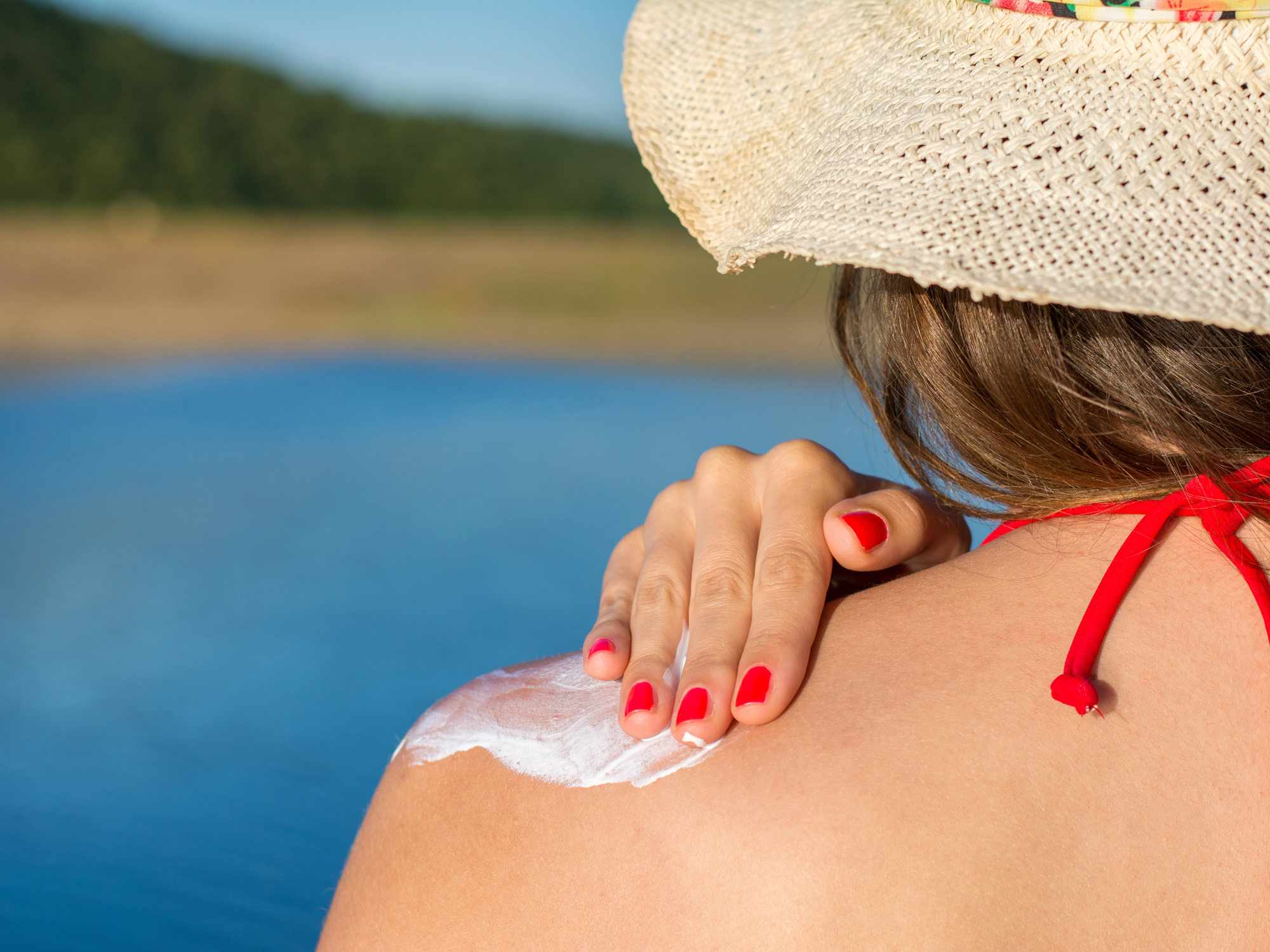Get Easy Health Digest™ in your inbox and don’t miss a thing when you subscribe today. Plus, get the free bonus report, Mother Nature’s Tips, Tricks and Remedies for Cholesterol, Blood Pressure & Blood Sugar as my way of saying welcome to the community!
The serious problem with high SPF sunscreens

You probably already know that conventional sunscreens are chock-full of concerning ingredients (like parabens, oxybenzone and retinyl palmitate).
But there’s something else you need to know about that bottle of Banana Boat SPF 100 you still have sitting around…
It may be giving you subpar sun protection too.
A recent analysis of popular sunscreens published in the Environmental Working Group’s yearly Sunscreen Guide uncovered some alarming facts about the sunscreens you’re slathering on your skin every day, including this doozy…
Up to 73 percent of sunscreens don’t protect your skin as well as they advertise, putting you at risk for sunburns and (worst of all) skin cancer.
The high SPF scandal
If you’re not familiar with the Environmental Working Group (EWG), it’s an environmental research and advocacy organization that’s dedicated to providing the public with information about chemicals, the environment and our health, without any corporate interference.
For the past 11 years, they’ve published a Sunscreen Guide that cuts through the marketing hype and helps you find safer sun protection.
This year’s guide addresses some of the usual health concerns that accompany sunscreens, like the fact that many of them contain known hormone disrupters and potential carcinogens. But it also delves into another serious sunscreen-related health concern…
Efficacy.
Because it turns out, what you see is not what you get when it comes to sunscreen… especially the high (over 50) SPF varieties.
You may buy a high SPF sunscreen so you can spend all day out in the sun without worrying. But the EWG found that high SPF sunscreens only give you slightly more sun protection than the low SPF versions.
As a quick refresher, the higher the SPF, the longer you’re supposed to be able to spend in the sun without burning. Basically, an SPF 50 sunscreen is supposed to allow you to spend 50 times longer in the sun without getting burned than if you went out without sunscreen. And an SPF 100 sunscreen is supposed to allow you to spend 100 times longer. That’s because, the higher the SPF, the more UVA and UVB rays the sunscreen is supposed to block. But that doesn’t seem to be the case with most high SPF sunscreens…
For example, you may assume that you’re getting twice the sun protection when you buy an SPF 100 sunscreen than when you buy an SPF 50 sunscreen, but the EWG found you’re only getting one measly percent more protection. SPF 100 blocks 99 percent of UVB rays while SPF 50 blocks 98 percent.
And to prove the ineffectiveness of high SPF sunscreens even further…
When Proctor & Gamble tested the efficacy of a competitor’s SPF 100 sunscreen, they found that depending on the lab in which it was tested, its effectiveness varied from that of an SPF 37 sunscreen to that of an SPF 75 sunscreen.
So basically, a bottle of high SPF sunscreen will give you some sun protection, but not nearly as much as you expect or pay for.
Even worse, when you use high SPF sunscreens, you’re probably exposing yourself to more harmful chemicals. That’s because they use higher concentrations of chemicals to filter the sun. Considering that they aren’t providing much added protection, it’s just not worth the risk.
Choosing the safest sunscreens
So what’s a health-savvy sunscreen user to do?
Well, according to the EWG, stick to the lower SPF sunscreen varieties. SPF 30 to 50 should be enough to protect even those most sensitive to sunburn.
You can also search for a sunscreen that’s free of the hormone-disrupter oxybenzone and the vitamin A derivative retinyl palmitate, which has been linked to cancer. And, as always, keep your eyes peeled for parabens. Check out the Environmental Working Group’s database of the safest and most effective sunscreens to find one that’s right for you.
Sources:
-
Experts’ tips for choosing the safest sunscreen — CNN. Retrieved May 30, 2017.
-
EWG’s Sunscreen Guide — Environmental Working Group. Retrieved May 30, 2017.












